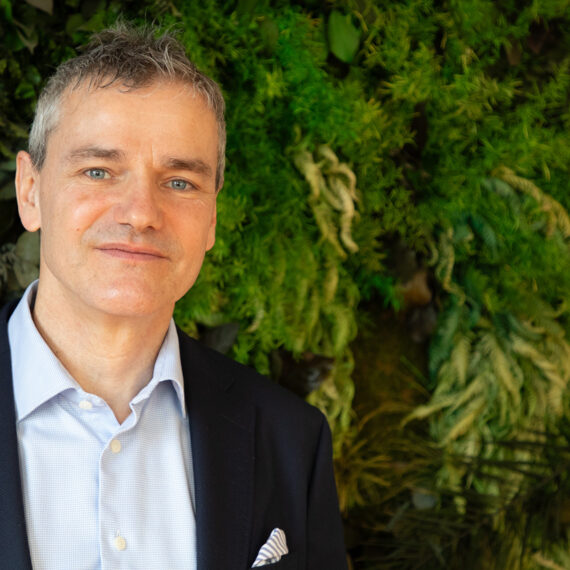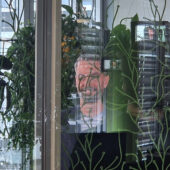Swiss company RepRisk uses a combination of artificial and human intelligence to assess ESG risks to businesses. CEO and co-founder Philipp Aeby explains in this interview how this works and why human expertise is essential for artificial intelligence.
How can investors and organisations check which reputational risks lurk in their portfolio or production chain? Environmental, social and governance (ESG) risks must be disclosed due to legal requirements, but they also play a critical role in investment decisions. Neutral data and a system that can automatically screen huge data volumes are needed for realistic assessments. The case for artificial intelligence – and RepRisk.
Philipp Aeby, what exactly does RepRisk do?
We examine ESG activities and where the risks lie for organisations. These include issues such as environmental pollution, human rights and bribery. Our insights are needed for due diligence, for example on customers of banks, portfolio companies of asset managers and suppliers to multinational groups.
Our key clients are financial institutions that want to know how a business partner, supplier or investment is doing – essentially, it’s about identifying and preventing reputational risks.
ESG is gaining in importance, partly due to new regulations and laws. Seems like you had a good sense for the market with your services?
Let me briefly take us back a bit. In the first phase in 2006, identifying reputational risks was a highly technical service required by credit or risk officers in the banking sector. Demand was driven by World Bank standards from the 1990s.
Then investors picked up on the topic. We gained our first investor as a customer back in 2008. He had invested in more than 9,000 companies and wanted to know which had been implicated in child labour or bribery allegations. But it was still a niche area. The boom only came with sustainable, or ESG, investing.
When an organisation talks about ESG or sustainability today, it has to state what it means by this. And this is the third phase, in which companies need our data. We’re delighted by this, because promises are no longer enough. Action is required, and this ultimately benefits all market players.
That’s why we’re optimistic about the future. There are more and more laws governing how companies do business. At the same time, advances in technology are driving greater transparency. This will improve sustainability.
Looking at your professional background, it was not immediately obvious that you would set up a business to evaluate reputational risks of companies. How did this come about?
There was a bit of luck involved. I’m a climatologist and environmental physicist by training, and I saw my future more in academia. For personal reasons, however, I decided to switch to consulting instead of conducting research as a postdoc in the US.
This was an incredibly exciting experience that broadened my horizons, but it didn’t quite meet my expectations. So I switched to a large US pharmaceutical. I learnt a lot there, but I still didn’t feel I’d found the right thing for me. Then in 2005, I learnt about a small consulting firm in Switzerland that was discussing with a major bank how to improve due diligence for initial public offerings. The aim was to use data to detect illegal logging and forged FSC certificates, for example, and to record this information in the IPO documents in order to avoid future legal action.
I was fascinated by this visionary idea of the bank. I knew right away that I wanted to build something in this area. I was particularly interested in creating transparency, because that ultimately leads to companies being more responsible towards people, employees and the environment.
What information do you use in your analysis?
We analyse many very serious incidents, such as illegal logging and pollution of the Amazon. Because of this, we said from the beginning that we would need sources that are independent of the companies involved. These include journalistic articles and reports from NGOs and governmental authorities – we screen around 150,000 sources today.
This allows us to quickly see when an incident escalates – for example, when a local newspaper reports on a slave ship in Thailand’s fishing industry and the South China Morning Post then picks up the story. That’s what we call a source escalation. These are important early warning signals for our customers, enabling them to act quickly.
You process a huge number of documents in different languages. How do you find the relevant information?
We screen around 2.5 million documents per day in more than 20 languages. Initially, we focused on keywords, such as whether a text contains the phrase ‘child labour’. We would also check whether a company or infrastructure project was mentioned. So we screened documents for key terms like coal mine, factory or road construction. In addition, the document had to have a negative sentiment. Good algorithms for this type of language analysis already existed in 2007.
Our advantage is that we have labelled tens of thousands of documents over the years – with everything from biodiversity loss to forced labour to money laundering. Including texts in Thai, Portuguese and Chinese. We therefore had good quality data with which to train our models. As a result, we can now identify and classify very precise risks.
We train our models for a specific task and run them on our own systems. We also combine our training data with large language models (LLMs). This ‘fine-tuning’ enhances the precision and quality of our models, as they’re based on human expertise. That is absolutely fascinating.
This requires a lot of know-how. How do you ensure the necessary expertise?
We do everything in-house. We’ve always had expertise in big data on the software development side, i.e. data engineering. We’ve also built up a team of machine learning engineers and data scientists. For us, connecting human and artificial intelligence was a necessity from the outset in order to be able to cope with the large data volumes and ensure quality.
The fact that we were able to do this is also thanks to the community, where a lot of knowledge is shared. This allows us to implement an incredible number of developments ourselves. Significantly, we continue to have more software developers than machine learning engineers.
But you still rely on people to check the results. What is the role of these analysts?
Our analysts check whether the models have interpreted a text correctly. For example, if a Wall Street journalist writes a piece about President Trump’s inauguration in which he mentions a case of corruption and a positive counterexample: the AI may classify the counterexample as an incident of corruption as well. It’s the job of our analysts to identify such misinterpretations and prevent AI hallucinations.
ReThink Conversational AI Workshop
Discover the future of customer service. Find out how artificial intelligence can make your customer service more efficient and improve the customer experience. In this workshop, you will work with Swisscom experts to develop a strategy for implementing conversational AI as a basis for further development.
About RepRisk
The global company, headquartered in Zurich, runs the largest daily-updated database on ESG risks, with 18 years of data history. For its analysis, RepRisk combines AI and advanced machine learning with human intelligence to identify significant ESG risks for companies, real assets and countries. The company is led by CEO and co-founder Philipp Aeby. RepRisk took third place in the 2024 Prix SVC Zurich, sponsored by Swisscom.




